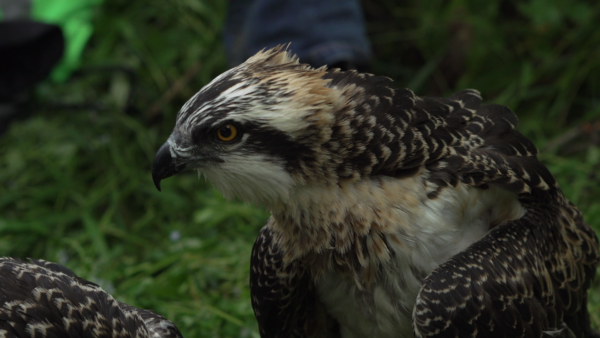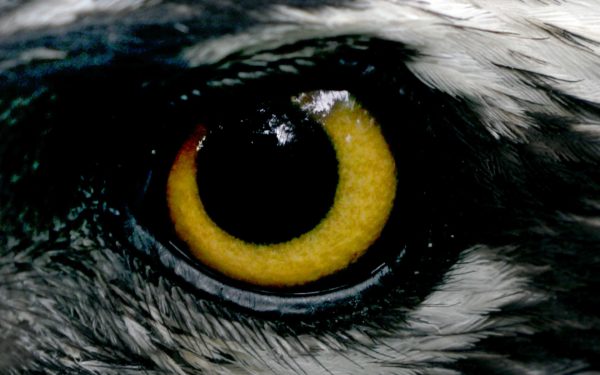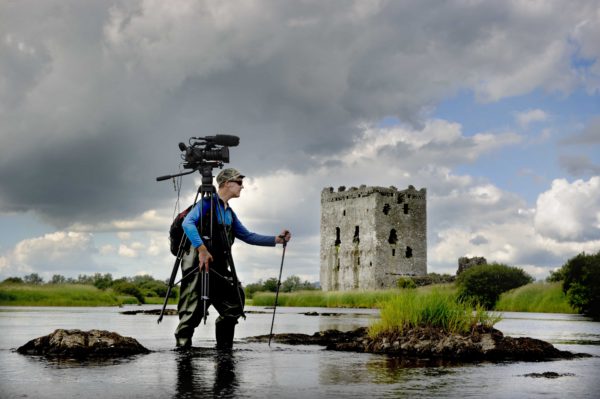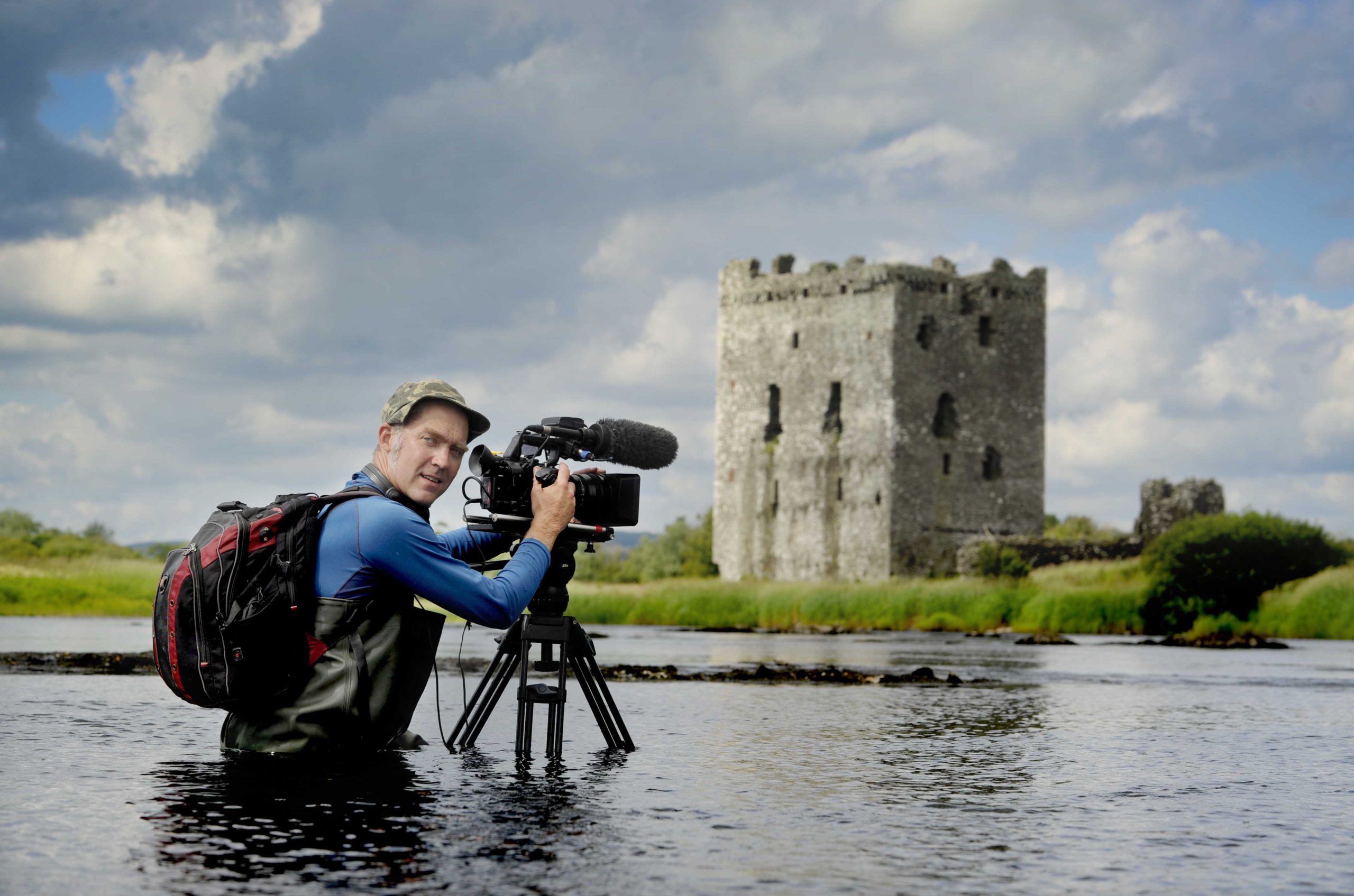Audio-visual installation explores the environment and eco-system that is home to one of Scotland’s rarest birds of prey.

One of Scotland’s rarest birds of prey, and the ecosystems that allow it to maintain its fragile presence in Scotland, are the focus of a new video art installation. A year in the landscape of the Threave ospreys was recently screened at Kelton Mains Farm, one of the handful of places where these magnificent hunters can be easily viewed by the public in Scotland today.
Video artist and filmmaker John Wallace has spent a year exploring the landscape and waterways around Threave, in Dumfries and Galloway, where the conditions are right for ospreys to survive and breed when they arrive annually from West Africa.
The project is part of Artful Migration which supports artists to create work informed by wildlife, the natural world, the environment and climate change. Among the compelling images in John’s work is a close-up of a young osprey’s eye. It was taken when the un-fledged birds were being ringed for study purposes.
John, who is based in the region, said: “What’s fascinated me is how much has to be in place when the birds arrive in Scotland from Africa each March. There’s a huge and diverse system of flora and fauna that changes during every season and creates the right conditions for them. With this work what I’m trying to do is to dig into this one place where they breed and rear young and show it across the year, including when they’re far away. The story of how these birds were able to re-establish in the area is also notable. They were spotted in the area, a nest platform was built to get them started, and sure enough a pair moved in – or rather back into a landscape they were always part of until they were wiped out 100 years ago.”
Majestic ospreys

The multi-screen installation, which recently played at the National Trust for Scotland’s (NTS) Threave Nature Reserve, coincides with the start of the conservation charity’s 100-year Threave Landscape Restoration Project to improve habitats and make the area at Kelton Mains more resilient to climate change.
John added: “As top predators, osprey catch the large fish, but the big fish need small fish to feed on and the small fish need their own conditions to thrive and so on. This has to happen all along their migration path, so you just have to hope the ecosystems in all those stopping places will be able to cope with continuing climate change. Hats off to the NTS that they’re already doing work to help that happen here.”

The art project has involved getting very close to nature, with John spending substantial amounts of time wading in the River Dee and neck deep in vegetation and biting insects.
He said: “It’s Scotland, but in summer it really is a jungle out there! Getting the kit and myself into position can be tricky, you get a wee bit warm you know, but it’s been a real gift being able to work at all during COVID. I’m so lucky to have had the support and a huge thanks for keeping a light on for the arts.”
Dr Samuel Gallacher, NTS Operations Manager for Threave Castle and Estate, added: “We are very pleased to be involved in this incredible project which showcases Threave and all the reasons why it is loved by so many, so powerfully. It’s very fitting timing as we’re just embarking on our 100-year project to restore this landscape and make it even better for the many species, including the majestic ospreys which visit us each summer.”

